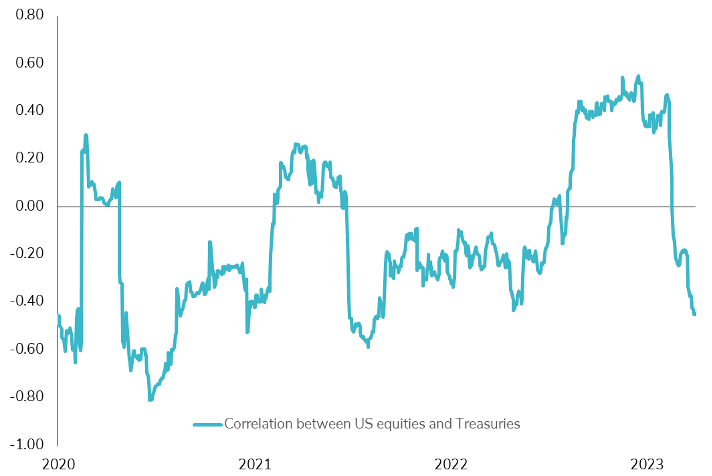What happened last week?
Central banks: In the US, the market is expecting another hike (25 bps), but more importantly the end of the Fed's tightening cycle, as well as 50 bps rate cuts by December. But at the same time, Powell is expected to keep saying that rates will have to stay high for an extended period of time. The Fed will also have to deal with the First Republic Bank failure and the debt ceiling situation. Any comments on these two issues will be closely scrutinized. In Europe, two other important pieces of data will be released before the ECB meeting: the ECB's quarterly bank lending survey and April inflation. These economic data could cement a 50bp hike, while the market expects a 25bp hike. The situation is tricky as the German economy is slowing down, while inflation is rising in countries like France and Spain. While the ECB's May meeting will not provide a forecast on the European economic outlook and the terminal rate, Lagarde is likely to remark on high inflation and wage pressures.
Rates: It was a strong week for rate performance, fueled by further evidence of stagflation in the US. US first quarter GDP was released at a much lower than expected level (1.1% vs. 1.9% exp.), while the core PCE index rose more than expected (4.9% vs. 4.7% exp.). The US 10-year Treasury yield ended the week down 15 bps at 3.43% and down 5 bps in April. The front end of the yield curve lost 18 bps last week to end the month at 4%, almost flat from the previous month. This translates into a strong weekly performance of +0.9% for the US Treasury Bond Index, bringing the monthly performance to +0.5%. European government bond performance also increased last week, with +1.3% and +1.0% for the German and Italian sovereign bond indices. The German 10-year yield fell by 17 bps to 2.31% and ended the month just above (+2 bps) the previous month. Year-to-date, European government bonds have underperformed US government bonds by a wide margin: +1.8% for Germany versus +3.6% for the US. UK government bonds are the worst performers so far, with a modest gain of +0.3% year-to-date. It is worth noting that France has been downgraded by Fitch from AA to AA-.
Credit: US investment grade (IG) bonds had an excellent week, confirming that this is the place to be for fixed income in 2023. Indeed, US IG bonds gained 0.9% last week (similar performance for the month as a whole), bringing 2023's performance to an impressive +4.3%. This performance is mainly due to the US rates, but also to positive technical factors, as the IG primary market only "printed" $65bn of transactions in April, while the market was expecting $100bn. In high yield (HY), performance was also strong in April, with a gain of 1%, bringing the 2023 performance to 4.5% so far. HY credit spreads have tightened by 15bps to 452bps ytd, despite a very volatile environment, but supported by strong technical factors such as low primary market activity and a still very low default rate. In Europe, performance was also good last week, despite some credit spread widening across the spectrum. Indeed, the Bloomberg EUR IG index gained 0.7% over the week and the month, while the EUR HY index gained 0.2%, ending the month with a positive performance of 0.5%. Like government bonds, European credit performance is well below that of US bonds: +2.5% and +3.4% respectively for the EUR IG and HY indices in 2023.
Emerging market: Emerging market bonds ended the month strongly, mainly due to the performance of US rates. Emerging market sovereign and corporate bonds in hard currency gained 1% and 0.5% respectively last week and a modest +0.2% and +0.6% in April. In EM corporate bonds, the Asia-Pacific region was by far the worst performer, weighed down by the performance of Chinese property bonds (-10% in April). In EM sovereign bonds, Latin America was the only region to record a negative monthly performance, led by Colombia, while Mexico was one of the best performing countries. Finally, EM bonds in local currency ended the month in negative territory at -0.1%.



.png)
